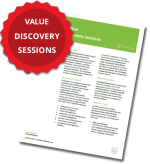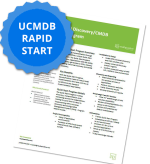ServiceNow SPM Implementation Checklist: 6 Critical Success Factors
ServiceNow SPM empowers organizations to streamline project and portfolio management, improve resource allocation, and drive business success. Yet, without a clear roadmap, implementations can falter, leading to wasted resources and missed opportunities. This ServiceNow SPM implementation checklist outlines six essential success factors to ensure your deployment delivers tangible business value. From aligning with customer goals to fostering strong leadership, these steps focus on simplifying processes and leveraging automation strategically—ultimately enhancing performance and achieving better business outcomes.
Let’s dive into the checklist.
1. Align with Customer Goals and Business Outcomes
The first step in any successful ServiceNow SPM implementation is to anchor the project in your customer’s goals and objectives. Understanding what they want to achieve—and why—ensures that the implementation delivers real business value.
Why It Matters
Misalignment wastes resources and risks stakeholder trust. If SPM doesn’t solve key issues—like delays or decisions—it’s a costly distraction. Alignment sharpens focus, curbs scope creep, and sets measurable goals to prove ROI. It drives adoption by showing value and keeps SPM relevant as needs evolve. Without it, success lacks definition, eroding support.
How to Do It
-
Define Objectives:
Convene stakeholders to identify key goals, such as cost reduction or faster project delivery, and rank them by priority. Tie each goal to specific SPM features, like demand tracking for prioritization. Document in a shared charter—e.g., “Reduce project delays by 20% in six months.” Use OKRs to ensure clarity and measurability. Review quarterly in alignment meetings, adjusting objectives based on shifting business needs to maintain focus and relevance throughout the implementation process.
-
Map Capabilities:
Link SPM tools to prioritized goals—e.g., portfolio views for visibility, resource planning for efficiency. Create prototypes to demo these mappings to leaders, showing real-time benefits like bottleneck identification. Test with a pilot group to validate functionality, gathering feedback on usability and gaps. Refine mappings based on input, ensuring every feature supports a defined objective. This alignment maximizes impact, avoids unnecessary customizations, and builds confidence in SPM’s ability to deliver targeted business outcomes.
-
Communicate Value:
Share alignment through tailored emails or meetings—e.g., “SPM boosts on-time delivery by 15%.” Develop role-specific dashboards to display progress, such as task completion for managers or ROI for executives. Launch with a kickoff event to highlight benefits, then gather post-launch feedback via surveys to confirm value perception. Adjust messaging or features based on input to sustain buy-in. Regular updates, like monthly newsletters, keep stakeholders engaged and reinforce SPM’s role in driving business success.
By starting with the end in mind, you create a purpose-driven implementation that resonates with the business.
2. Simplify Processes and Avoid Over-Automation
Automation is a cornerstone of ServiceNow SPM, but overcomplicating workflows can backfire. Simplification, guided by the 80/20 rule, is key to a successful rollout.
Why It Matters
Over-automation confuses users, slows adoption, and hikes maintenance. Focusing on high-impact, simple processes boosts usability and cuts technical debt. This aids quick wins and long-term flexibility. Complexity drives users back to old tools, tanking investment. Simplicity ensures SPM stays sustainable and effective.
How to Do It
-
Prioritize Core Processes:
Begin by analyzing workflows to find the 20% that deliver 80% of the value. Use stakeholder surveys, process mapping, or data analysis to target high-impact areas like project approvals or resource allocation. Automate these first for quick wins and momentum. Start with one team, then scale up. This phased approach minimizes risk, allowing tweaks before full deployment, ensuring automation supports business goals without overwhelming users or systems.
-
Keep It Intuitive:
Design workflows that prioritize user simplicity and ease. Cut unnecessary steps—every click or field must add value. Use clear, familiar terms and align with natural user habits. Engage a small end-user group early to test and refine usability. Utilize ServiceNow features like guided tours or contextual help to boost clarity. The aim is seamless automation that feels intuitive, not forced, enhancing adoption without frustrating users.
-
Test and Refine:
Pilot automated processes with a small user group to confirm they work as intended. Define success metrics—e.g., time saved or fewer errors—and collect feedback via surveys or interviews. Adjust workflows based on insights, fixing issues like unclear steps or gaps. Plan for multiple iterations to keep complexity low and meet user needs. This feedback-driven process ensures adoption and lasting value without overcomplicating the system.
Simplifying processes ensures that automation enhances efficiency without sacrificing usability.
3. Implement Key Performance Metrics from the Start
Metrics are the backbone of any SPM implementation, providing visibility into performance and success. Embedding key performance indicators (KPIs) and reports in the initial release sets the stage for data-driven decision-making.
Why It Matters
No early metrics mean SPM can’t prove worth or guide choices. KPIs set benchmarks, ensure accountability, and enable data-driven moves—like resource shifts. Quick wins build momentum and counter pushback. Starting with metrics lays a scalable foundation as needs grow.
How to Do It
-
Select Relevant KPIs:
Begin by meeting with stakeholders to identify key business objectives, such as improving project delivery times or reducing costs. Collaboratively select KPIs that directly measure these goals, like ‘percentage of projects completed on time’ or ‘budget variance.’ Ensure metrics are specific, measurable, and tied to strategic priorities. Involve end-users in the selection process to boost buy-in and relevance. Document the chosen KPIs in a shared dashboard or report, setting clear targets for each to guide performance tracking.
-
Leverage ServiceNow Tools:
Use SPM’s built-in reporting and dashboard capabilities to bring your KPIs to life. Configure custom dashboards for different roles—project managers might need task completion trends, while executives require portfolio health overviews. Utilize ServiceNow’s visualization tools, like charts and heat maps, to make data intuitive. Set up automated reports to deliver insights regularly, reducing manual effort. Test these tools with a small group first to ensure clarity and functionality, then roll out to the wider organization.
-
Ensure Accessibility:
Make KPIs and dashboards easily accessible to all relevant users. Configure role-based permissions in ServiceNow to grant appropriate access—view-only for most users, edit rights for administrators. Embed dashboards in common workflows, like project homepages, for seamless access. Set up automated email reports—weekly for managers, monthly for executives—to keep stakeholders informed without extra effort. Provide a brief training session on accessing and interpreting the data, ensuring users know how to leverage insights for their roles.
Starting with metrics builds accountability and provides a clear picture of the implementation’s impact from day one.
4. Baseline Metrics and Enhance Over Time
Once KPIs are in place, baselining them allows you to track progress and refine the system over time. Continuous improvement is essential for long-term success.
Why It Matters
Baselines show progress (e.g., delays down 10%), proving value. Without them, success is guesswork, risking doubt. Regular updates keep SPM aligned with shifting goals—e.g., adding risk metrics. This drives continuous improvement and sustained support, maximizing long-term impact.
How to Do It
-
Establish Baselines:
Immediately after go-live, capture initial KPI values to set a clear starting point. Use existing data from legacy systems or run a quick audit to gather accurate figures. Document these baselines in a centralized location, like a ServiceNow dashboard, with clear labels and dates. Share them with stakeholders in a kickoff meeting, explaining how they’ll be used to measure progress. Revisit after one month to confirm accuracy, adjusting for any anomalies like training-related dips in performance.
-
Monitor and Analyze:
Set a regular review schedule—monthly for operational teams, quarterly for leadership—to track metrics against baselines. Use SPM’s analytics tools to generate comparison reports, highlighting improvements or gaps. Hold review sessions with key users to discuss findings, asking, ‘What’s driving this change?’ or ‘Why is this metric lagging?’ Supplement with user feedback via surveys to add context. Use these insights to celebrate wins and plan targeted fixes, keeping the team motivated and focused on continuous improvement.
-
Iterate:
Leverage review data to drive system enhancements. If a metric like resource utilization stays low, adjust allocation rules or add training on capacity tools. If new priorities emerge, like risk management, introduce relevant KPIs. Test changes in a sandbox first, then roll out with clear communication about updates. Solicit user input post-update via quick polls to ensure the tweaks work. This cycle keeps SPM dynamic, ensuring it evolves with business needs and delivers ongoing value.
This iterative approach ensures your SPM deployment remains relevant and effective as business priorities shift.
5. Invest in Hands-On Training and Communication
Technology is only as good as the people using it. Providing robust training, clear communication, and ongoing support is critical to driving adoption and maximizing SPM’s potential.
Why It Matters
Weak adoption sinks SPM’s value. Without training, users misuse it or quit, skewing data. Clear communication cuts resistance by showing benefits. Ongoing support sustains skills and engagement. This investment boosts ROI and builds a culture of use critical for success.
How to Do It
-
Tailor Training:
Develop role-specific training programs to ensure relevance—project managers learn task management, executives explore portfolio reporting. Use a mix of formats: live workshops for interaction, video tutorials for self-pacing, and hands-on labs for practice. Create quick-reference guides for each role, like ‘How to Assign Tasks in 5 Steps.’ Pilot the training with a small group, gather feedback on clarity, and refine before broad rollout. Schedule follow-up sessions to reinforce skills and address questions.
-
Communicate Regularly:
Keep users informed at every stage. Pre-launch, share the project’s purpose and timeline; post-launch, highlight benefits and tips via newsletters, webinars, or intranet posts. Craft messages that resonate—tell a project manager, ‘SPM cuts reporting time by 30%,’ or an executive, ‘See portfolio health in one click.’ Use multiple channels to reach everyone and encourage feedback through Q&A sessions. Share success stories, like a team that halved delays, to inspire adoption.
-
Create Forums:
Set up online communities—like Slack channels or ServiceNow forums—where users can ask questions, share tips, and troubleshoot. Host monthly Q&A sessions or office hours with experts, recording them for on-demand access. Seed forums with starter content, like FAQs or best practices, to spark engagement. Recognize active contributors with shoutouts or small rewards to build a culture of collaboration. Monitor participation to spot common issues, feeding them back into training or system tweaks.
Investing in people ensures the system is used effectively, amplifying its impact on business outcomes.
6. Secure Strong Leadership and Change Management
Leadership support and a structured organizational change management (OCM) program are the glue that holds an SPM implementation together. Without them, resistance can derail even the best-laid plans.
Why It Matters
No leadership buy-in stalls SPM; weak change management fuels resistance. Both ensure users adopt new ways, avoiding wasted effort. Strong exec support and OCM align culture, turning potential into results. They’re key for scaling and sustaining SPM’s impact.
How to Do It
-
Engage Leaders:
Involve executives early by briefing them on SPM’s benefits, like faster alignment or cost savings. Secure their commitment through one-on-one meetings, tailoring the pitch to their priorities—e.g., ‘This cuts reporting time for your team.’ Encourage them to communicate this vision via town halls, video messages, or blogs, sharing specific goals like ‘SPM will help us hit 90% on-time delivery.’ Provide talking points and progress updates to keep messaging consistent and impactful.
-
Build an OCM Plan:
Develop a comprehensive change management strategy. Start with a stakeholder analysis to map impacts—project managers might fear added work, while executives want ROI proof. Create a phased communication plan: pre-launch expectations, launch-day guidance, post-launch wins. Conduct change impact assessments, interviewing users to uncover concerns, then address them in FAQs or demos. Assign OCM champions within teams to amplify the plan. Review effectiveness monthly via sentiment surveys, tweaking based on resistance or confusion levels.
-
Reinforce Commitment:
Celebrate milestones—like training completion or 50% adoption—with events or announcements, tying them to outcomes, e.g., ‘We’ve saved 100 hours this month.’ Recognize early adopters publicly via newsletters or awards, sharing their stories. Offer small incentives, like gift cards, for teams hitting usage targets. Host quarterly ‘SPM Spotlight’ sessions to showcase progress and gather feedback. Monitor adoption metrics—like logins or workflow usage—and adjust tactics, such as extra training for lagging teams, to sustain momentum.
Strong leadership and change management create a supportive environment where SPM can thrive.
Turning Your SPM Vision into Reality
ServiceNow SPM has the potential to transform how your organization manages projects and portfolios, but success depends on execution. This ServiceNow SPM Implementation Checklist provides a roadmap to achieve that success by focusing on six critical factors:
-
Aligning with customer goals and business outcomes.
-
Simplifying processes and avoiding over-automation.
-
Implementing key performance metrics from the start.
-
Baselining metrics and enhancing them over time.
-
Investing in hands-on training and communication.
-
Securing strong leadership and change management.
By adhering to these principles, you’ll improve business outcomes through the simplification and automation of business processes, resulting in enhanced performance and measurable results. Whether you’re just starting your SPM journey or looking to optimize an existing deployment, this checklist will guide you toward success.
Take the Next Step
Want a more detailed ServiceNow SPM Implementation checklist? Download our comprehensive ServiceNow SPM Implementation Guide from our webinar or contact our team for expert advice and guidance. Let’s turn your SPM vision into reality.










